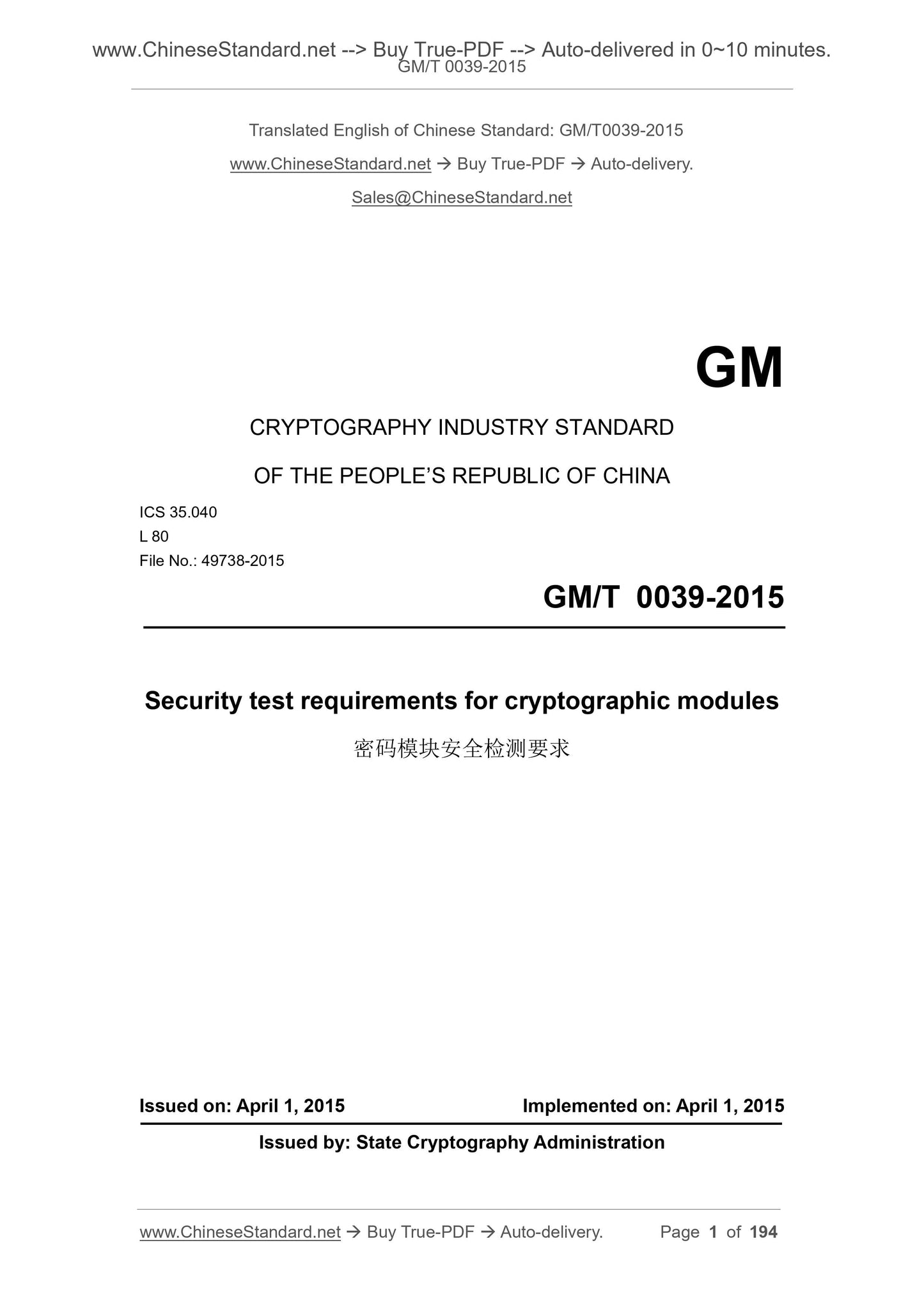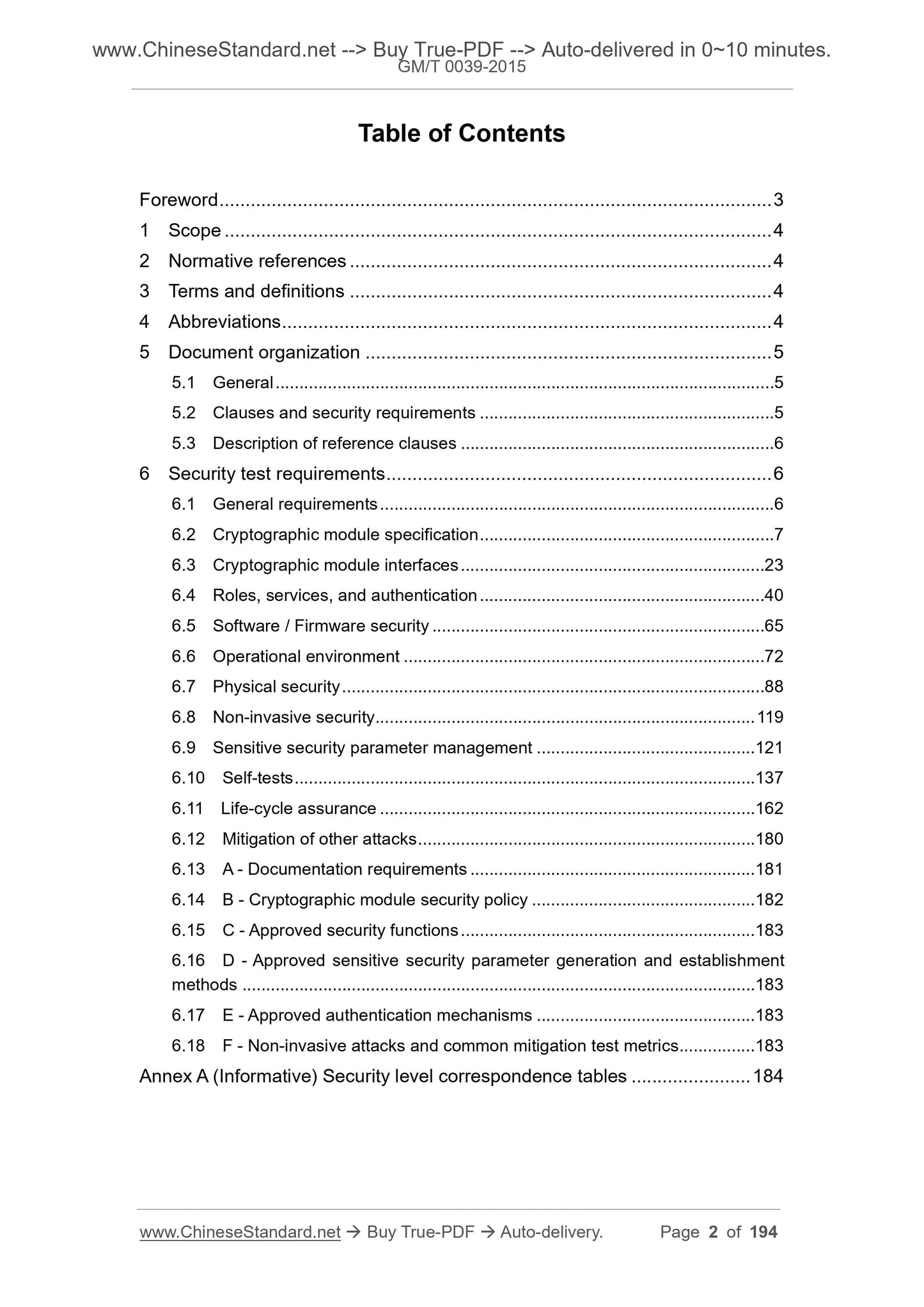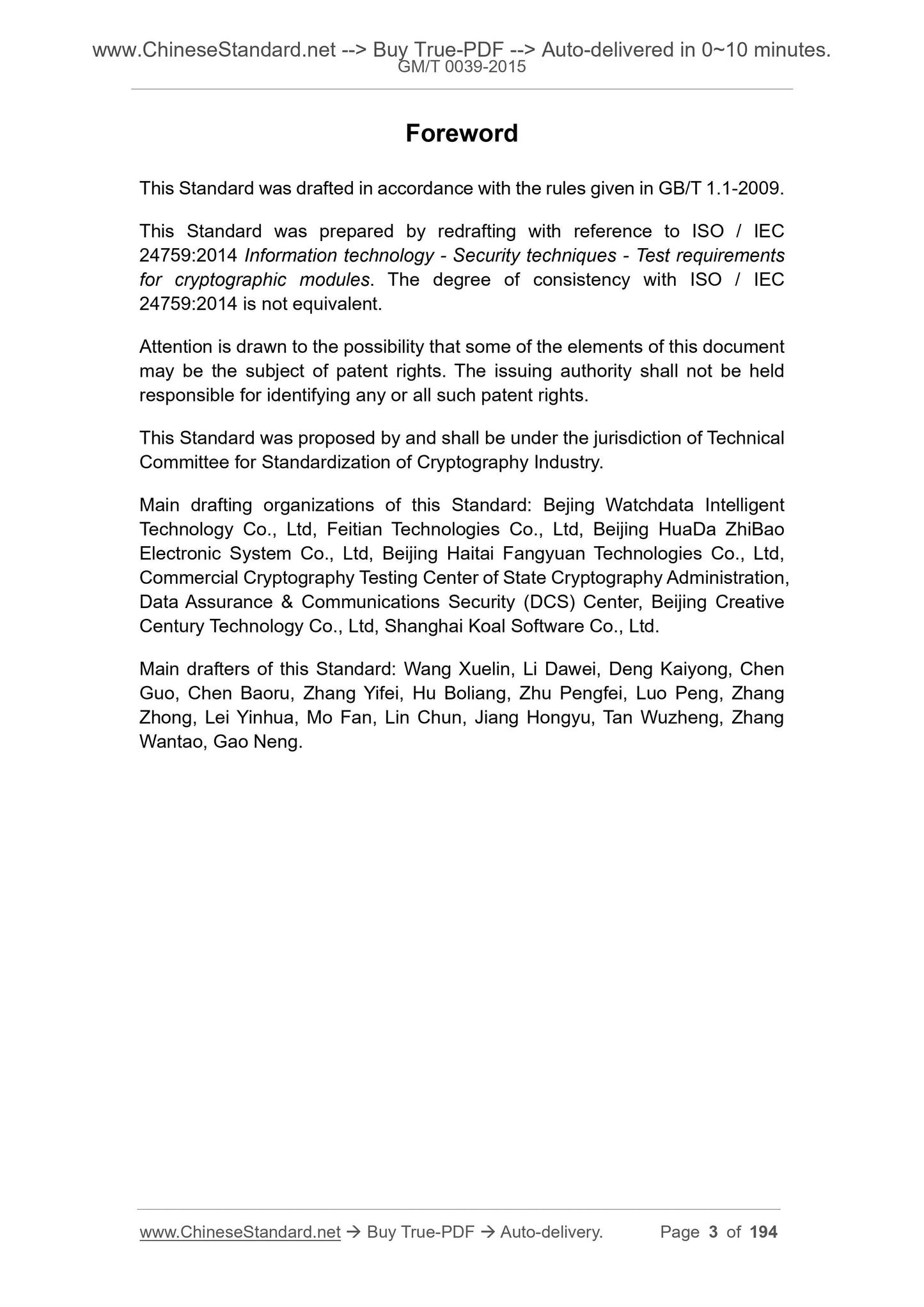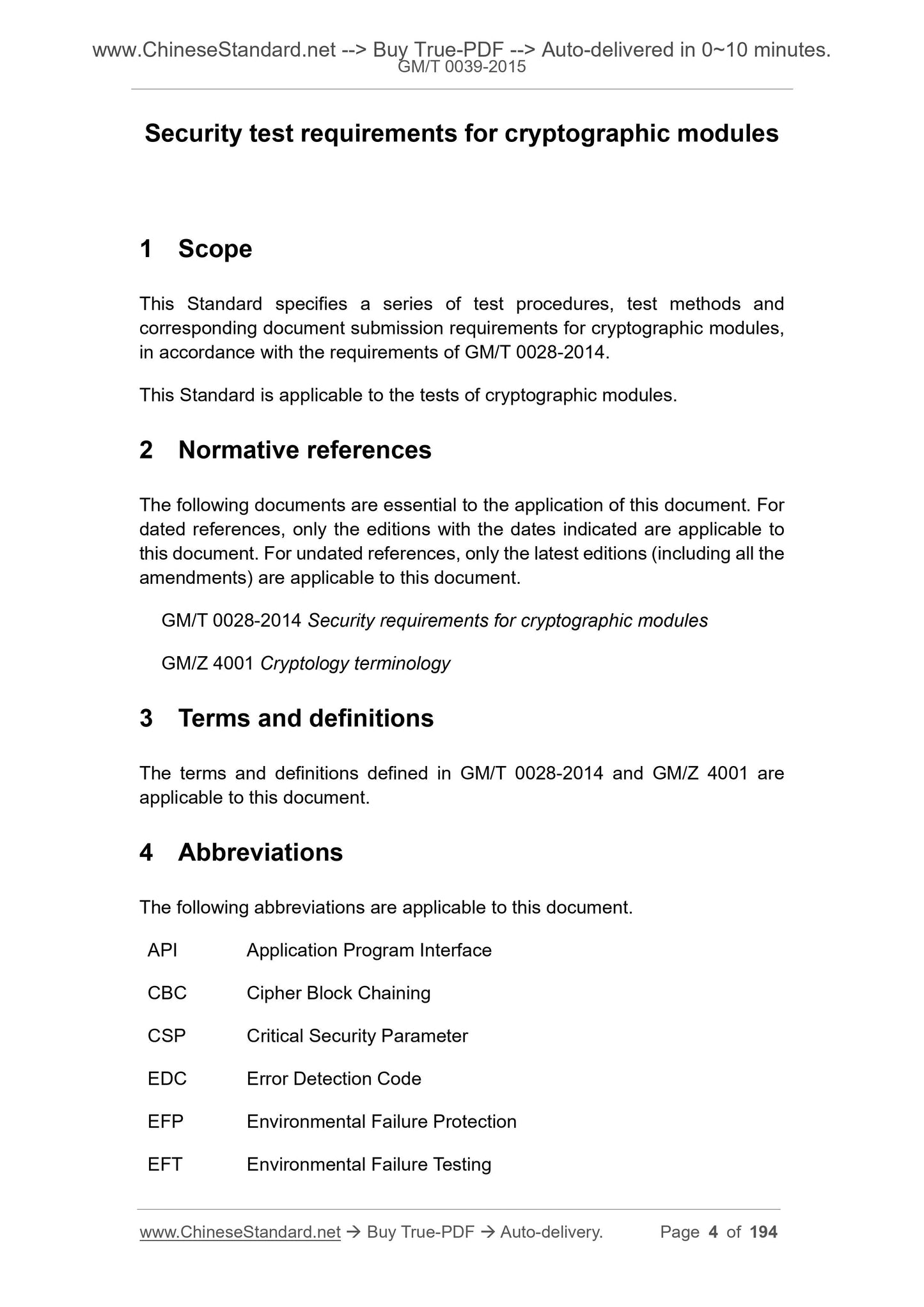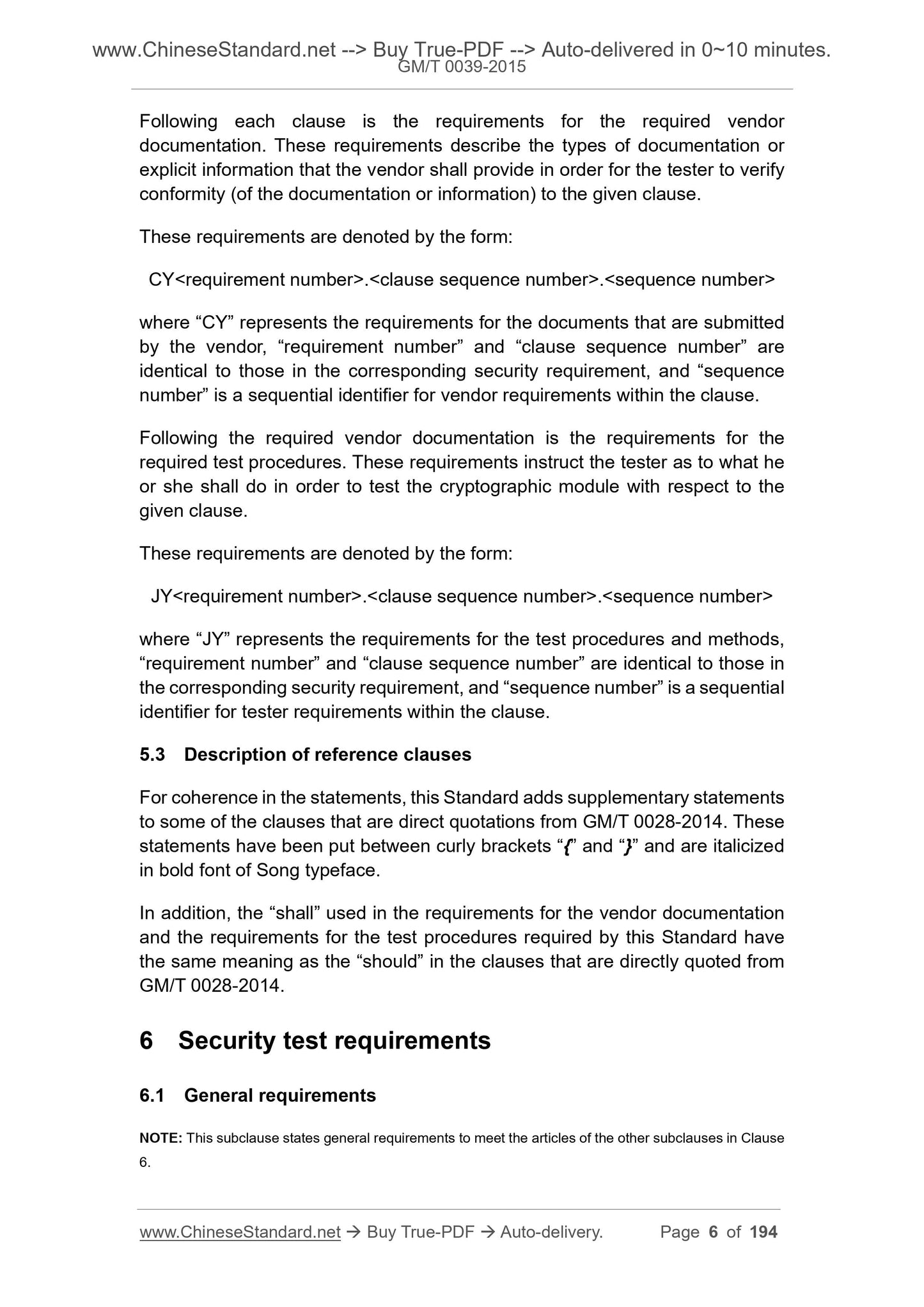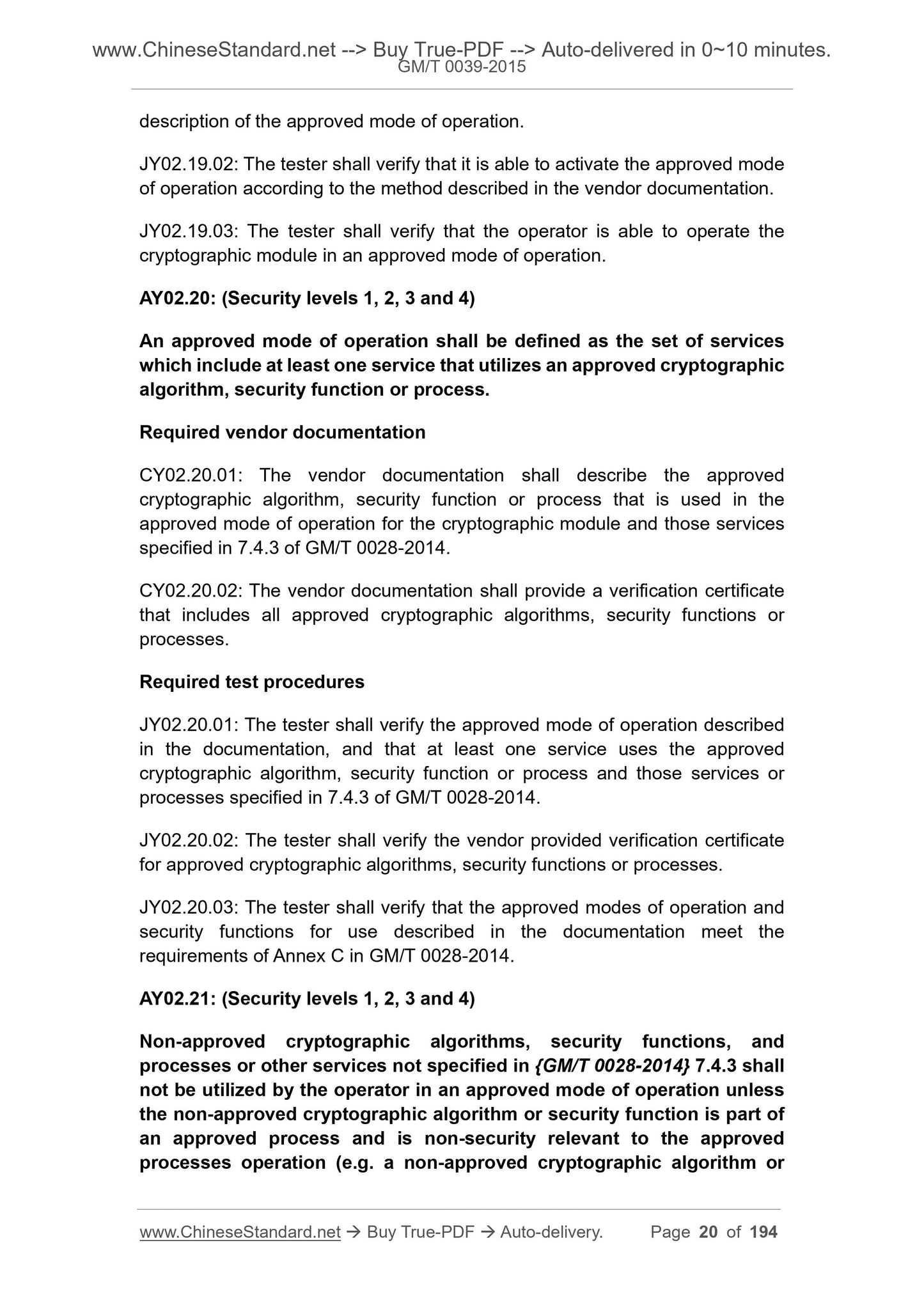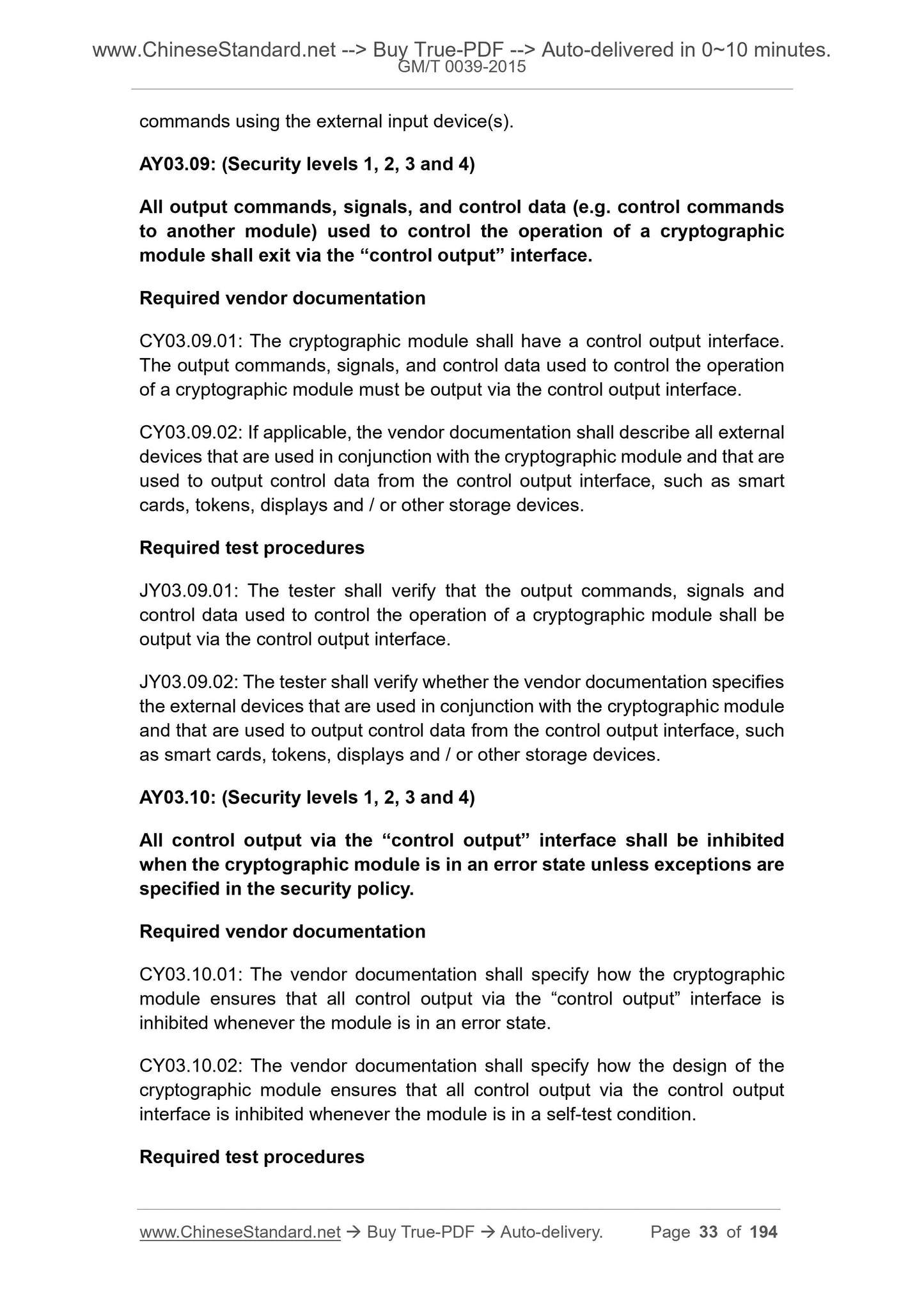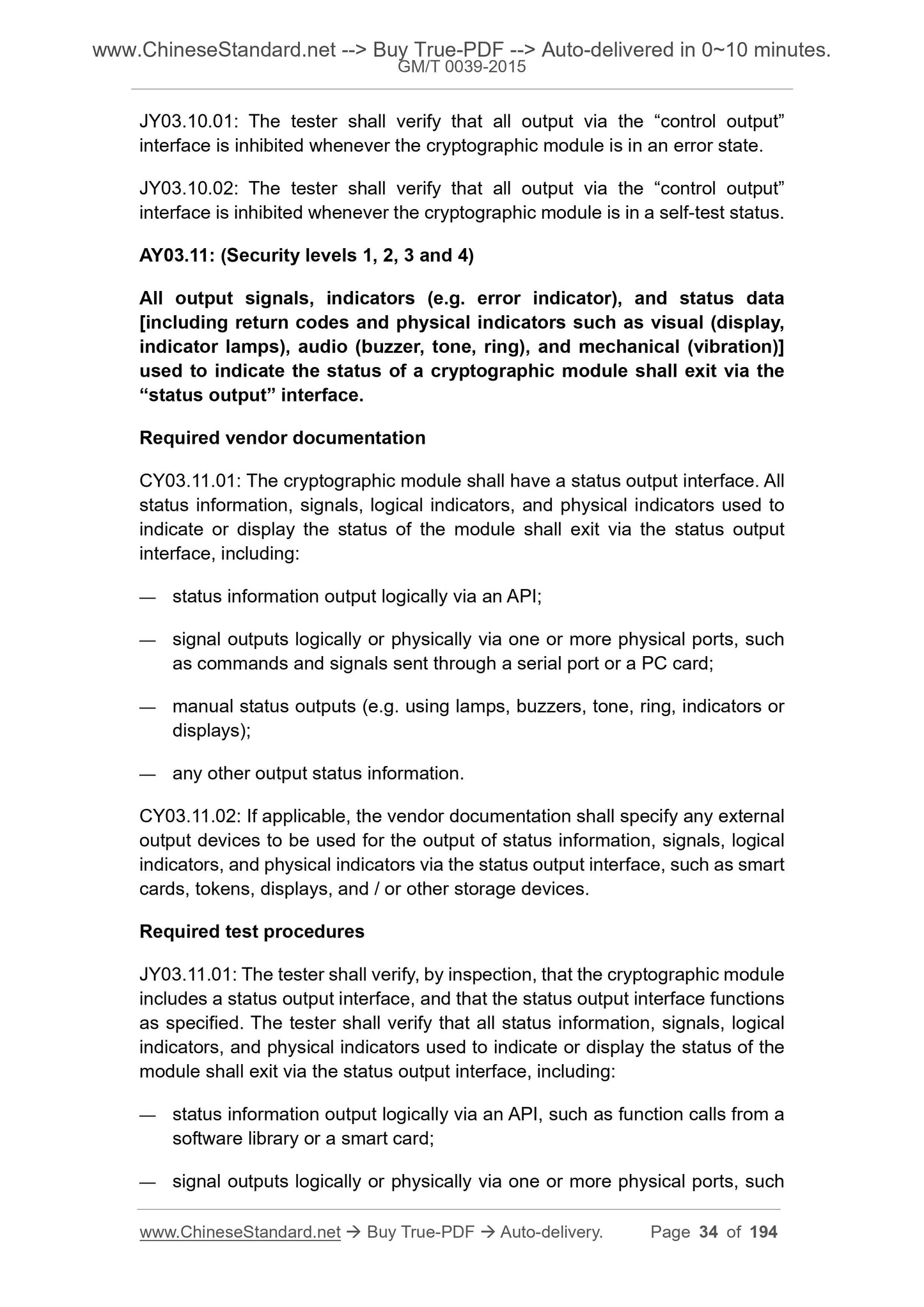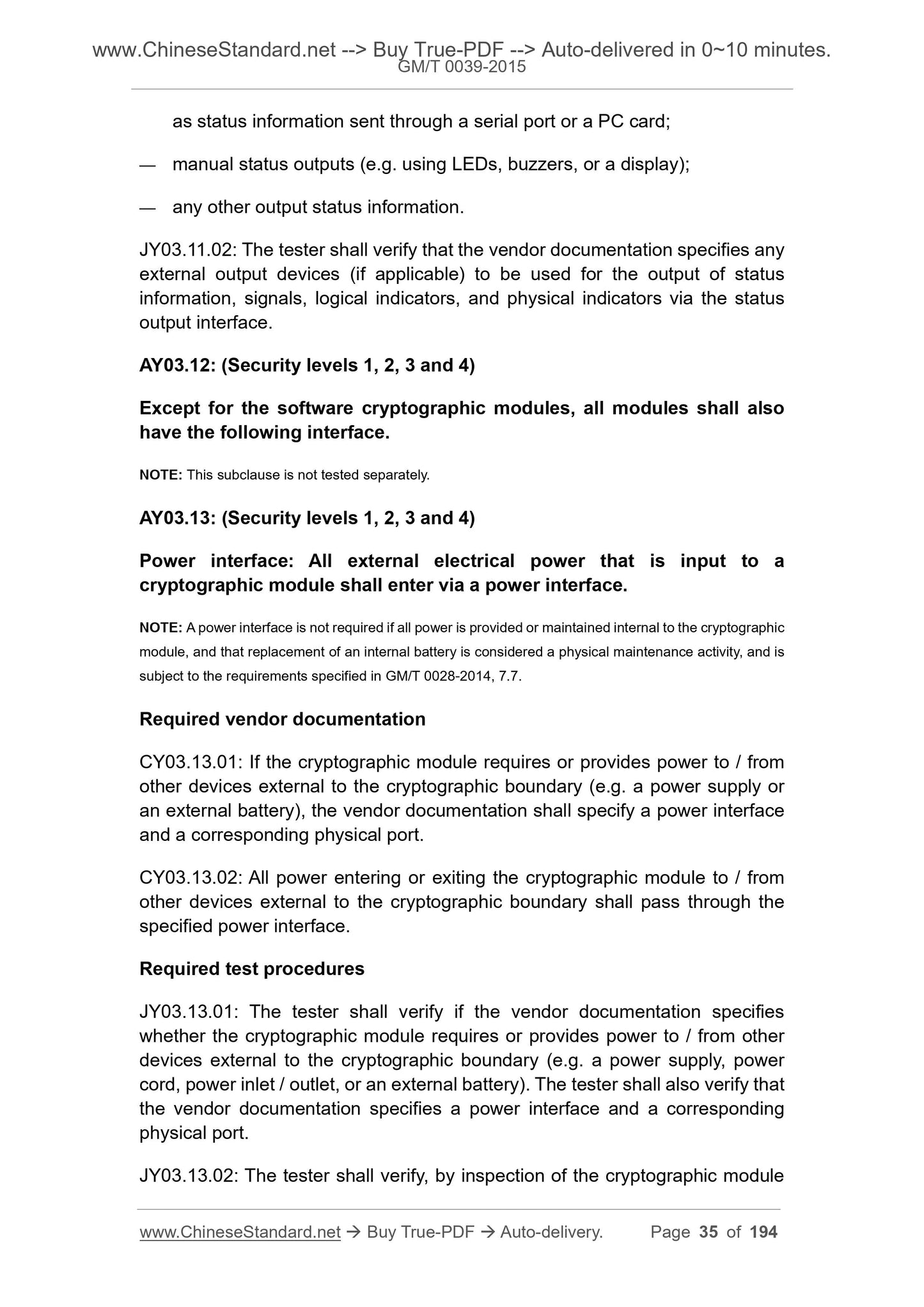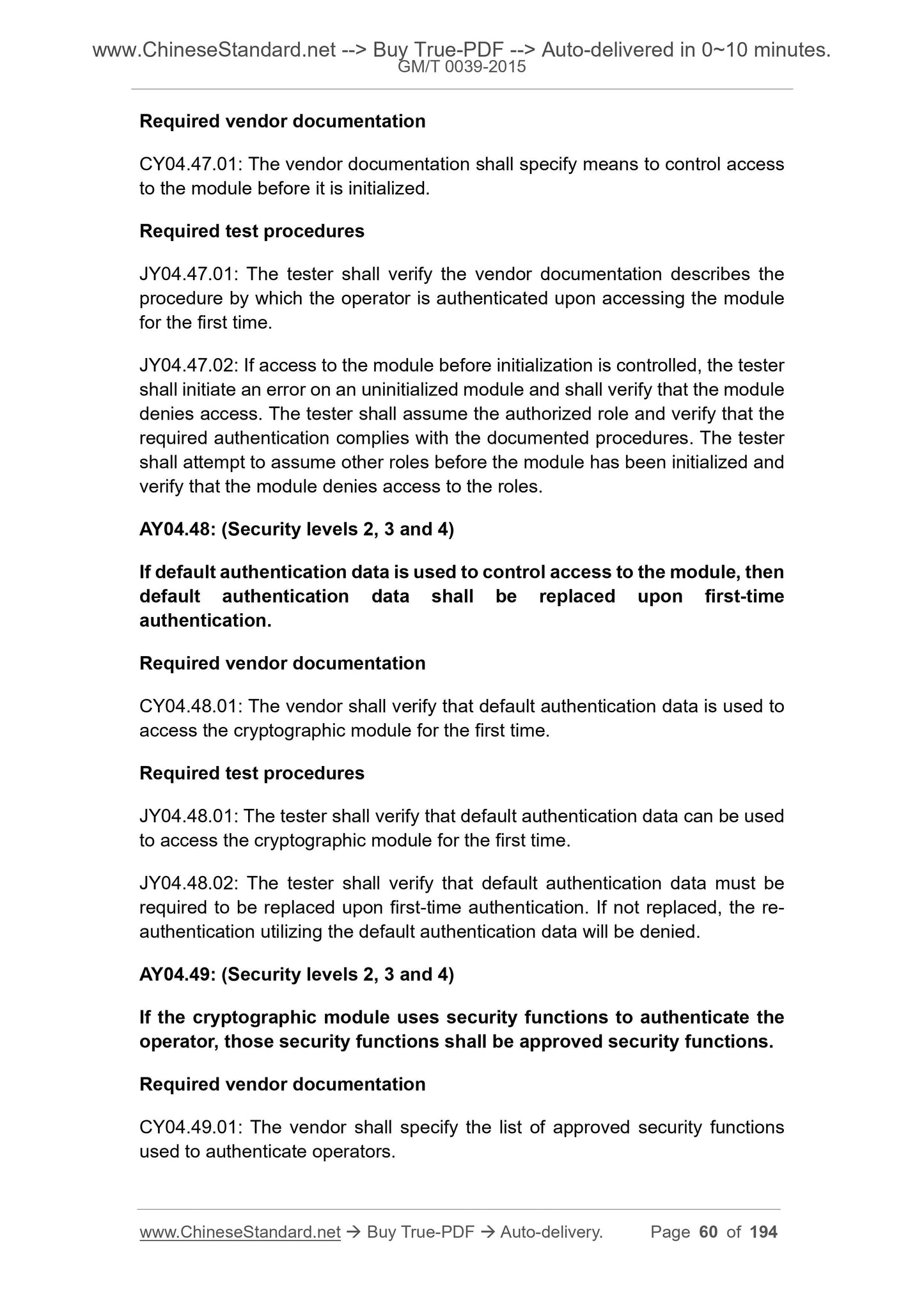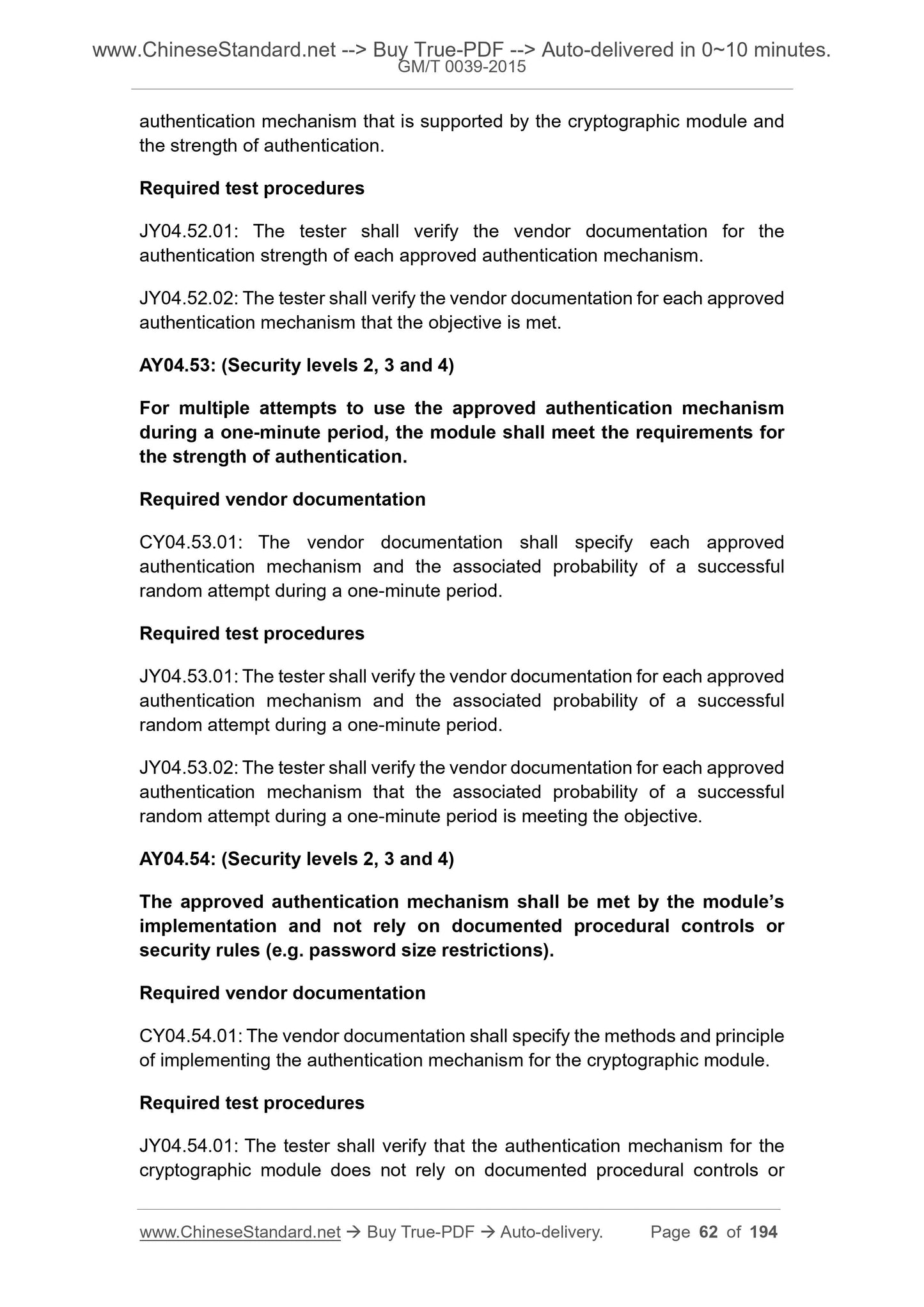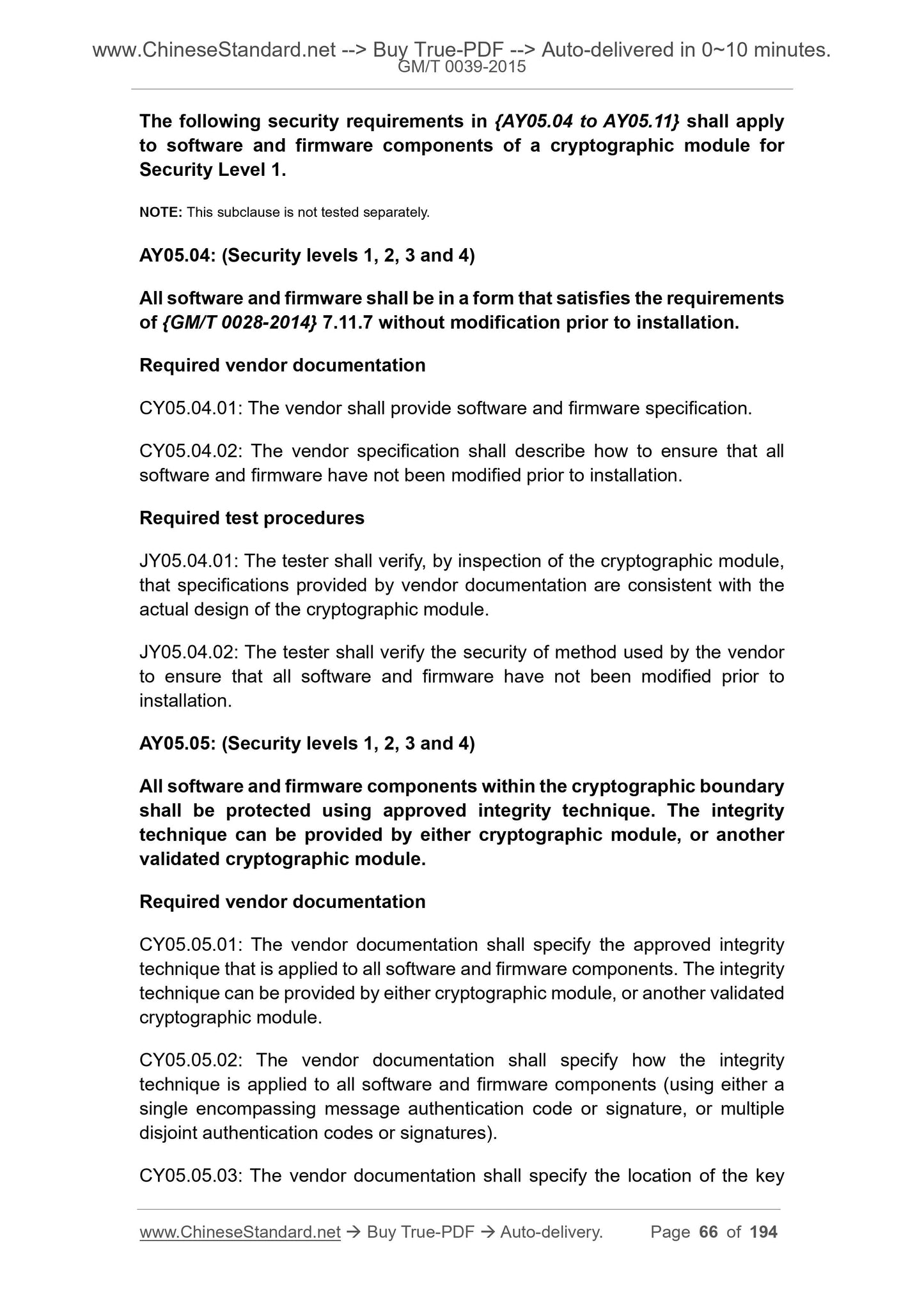1
/
of
12
www.ChineseStandard.us -- Field Test Asia Pte. Ltd.
GM/T 0039-2015 English PDF (GM/T0039-2015)
GM/T 0039-2015 English PDF (GM/T0039-2015)
Regular price
$365.00
Regular price
Sale price
$365.00
Unit price
/
per
Shipping calculated at checkout.
Couldn't load pickup availability
GM/T 0039-2015: Security test requirements for cryptographic modules
Delivery: 9 seconds. Download (and Email) true-PDF + Invoice.Get Quotation: Click GM/T 0039-2015 (Self-service in 1-minute)
Newer / historical versions: GM/T 0039-2015
Preview True-PDF
Scope
This Standard specifies a series of test procedures, test methods andcorresponding document submission requirements for cryptographic modules,
in accordance with the requirements of GM/T 0028-2014.
This Standard is applicable to the tests of cryptographic modules.
Basic Data
| Standard ID | GM/T 0039-2015 (GM/T0039-2015) |
| Description (Translated English) | Security test requirements for cryptographic modules |
| Sector / Industry | Chinese Industry Standard (Recommended) |
| Classification of Chinese Standard | L80 |
| Word Count Estimation | 107,173 |
| Issuing agency(ies) | State Administration of Cryptography |
Share
